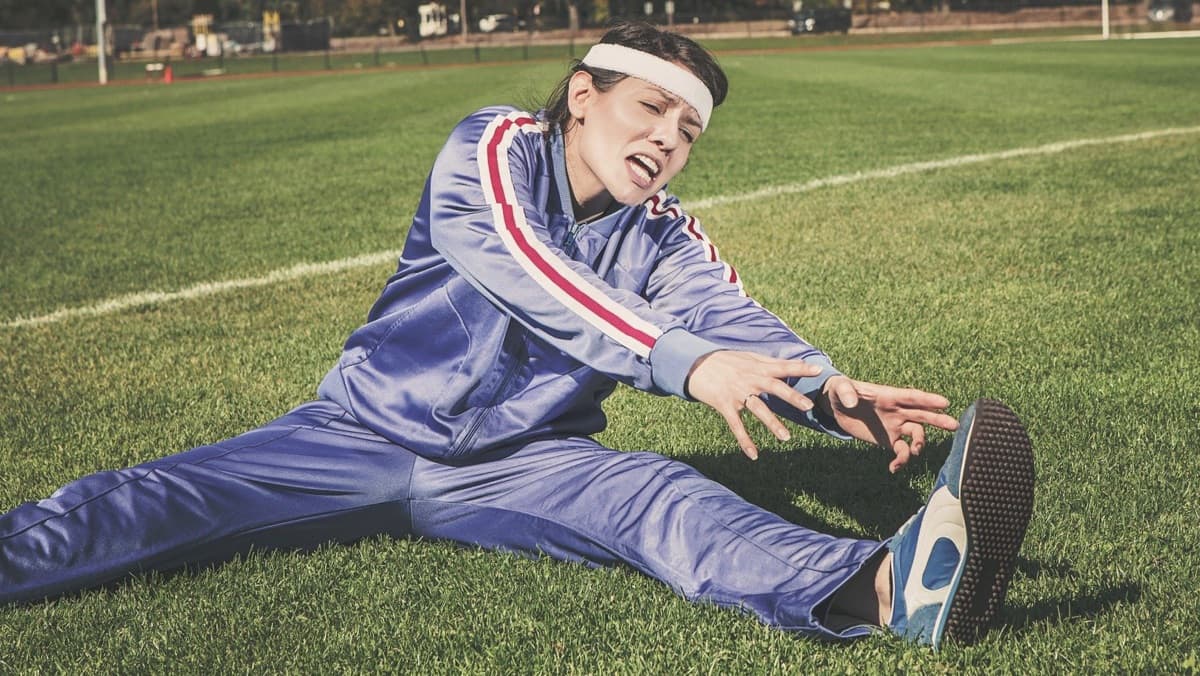When you claim to care about health and fitness, you should consider these 6 factors to keep your health fit and achieve greater fitness goals.

Water
It’s really hard to take someone seriously when they claim to care about health and fitness but do not drink enough water. Water is responsible for running literally everything in our bodies; from digestion, energy production, lubrication to temperature regulation. Nothing you do for your health can ever hope to work, or work as well as it could have, without sufficient water intake.
How do you know if you’re getting enough though? How much is sufficient? It’s simple: Your urine should always be clear. If it’s any shade of yellow, you need to drink more.
Reaching optimal levels of hydration can take individuals weeks or even years depending on how they’ve treated their body up until that time. Our bodies are great at adapting and will do so even if the result limits our potential. Keep drinking water in abundance and the body won’t have to settle for anything less than its peak performance.
What to do if you’re struggling to ingest enough water?
As your body has adapted to its current water intake, you might face some initial resistance in drinking more. I’d suggest trying to form daily rituals that will make more water available to your body when it is needed most.
- A pretty basic ritual would be to drink 750ml to a litre of water first thing after waking up.
- Another would be to drink 500-750ml before meals (this one might feel a bit tricky at first but it really aids digestion).
- Keep water around you and in sight so that you remember to drink more often.
- Make bathroom arrangements so that urination is not a deterrent from drinking more water.
- Drink water when you would’ve otherwise sprung for a stimulant/diuretic like coffee. You’ll be surprised how well that works (usually requires 250ml+ to feel a difference instantly).
- Drink water when you’re upset/low/angry.
Breath
While you might survive without water for a few days, it takes about 8 minutes for the onset of permanent brain damage without breathing. But breathing is automatic right? Who could possible need help with that? As it turns out, a lot of people.
As infants, we all breathe deeply through the abdomen and utilizing the lower half of our lungs, inhaling and exhaling to maximum capacity. Observe a sleeping child and you will see their belly expand with every inhalation and contract on exhalation. This is known as ‘embryonic breathing’ because this action lets the child intake nutrition and expel waste via the umbilical cord while in the mother’s womb.
So, at some point we all used to breathe like this. Unfortunately, the stresses of growing up, coupled with lifestyle factors and imbalanced exercise has us breathing higher, shallower and closer to the chest cavity until we all but lose the ability of the deep breath we were imbued with at birth.
How do we correct this? Practice breathing the correct way in a relaxed position, imagining the belly filling up with air and expanding when you inhale and contracting when you exhale. Do this with conscious intent and with enough practice it will happen unconsciously.
Correct breathing is particularly important from a fitness perspective. You should notice a tremendous increase in performance of any intensity as oxygen uptake is one of the prime factors in any sort of exercise. You cannot hope to be competitive or get the best out of yourself if you are not breathing to capacity.
Apart from the incredible exercise benefits, deeper breathing should improve your mood and relaxation, allow blood vessels to dilate and also improve cognitive ability due to increased oxygen supply to the brain. If you want to lose fat, you should know that breath is an important factor to the thermogenic effect that results in fat-loss and that losing weight requires you to breathe well, above all other exercise factors. Deep breathing along with correct hydration will keep your body in a healthy, alkaline state.
Cardio
No matter what your fitness goal, Cardio is king. Of course, the volume of work would vary from person to person but it is unwise to ignore the role of cardio, especially if your workout is based on weight training, for example as it provides a sort of balancing factor. Exercising your cardiovascular system has by far the biggest effect on your health and longevity since it focuses on essential organs critical to your well-being.
You might love to read: Best elliptical machines reviews
Your heart, lungs and blood along with the rest of the components of the circulatory system determine your peak workload and influence a number of factors ranging from maximum power to rate of recovery. It plays an important role in fat metabolism, increasing your mitochondrial efficiency and also improves brain function due to increased oxygen uptake.
If weights and toning exercises give you external strength, then the internal strength provided by cardiovascular exercise is a powerful combination that will let you consistently set personal records in all areas of fitness.
An ideal way of incorporating cardio into your routine is to use it for warming up or as a cool down, just before stretching as you wind up your workout. Commuting by bike or on foot, if the distance is feasible is also an excellent way of getting your circulation going while spending no extra time at the gym. Combine cardio with excellent hydration and correct breathing for achieving unbelievable endurance.
Weights
Just as you shouldn’t ignore Cardio if your workout is primarily strength training, you shouldn’t ignore weights just because your focus is endurance or toning/stretching exercise. Weight training can have a profound effect on your posture, maximum power and when done with proper form, prevent several injuries associated with over-training or ‘pattern overload’. Pattern overload refers to activities where you perform the same action over and over with a high frequency, for example; running, cycling, rowing, boxing etc.
Cardio will make you lose weight and increase your stamina but weight training is what will get you toned, curved and cut. But it’s not just aesthetics. The muscle built from weight training will not only increase strength but also provide insulation and serve as an armour against external injury. Regular weight training will ensure optimal bone density, increase load-bearing levels and reduce instances of fractures
Most people will benefit from the overall training factor of large, compound lifts such as the deadlift, squat and bench-press. These exercises work the largest muscles in the body and engage some really important groups, giving you the most bang for your buck when it comes to weight training. Low-volume, high-frequency is what we would recommend over focussing on one body part at a time. You don’t have to lift too heavy or do too much intensity. Just do it often, with correct form, at a sustainable level and you will get the majority of the benefits.
Weight training coupled with high levels of endurance, good breathing technique and hydration will allow you to reach awe-inspiring levels of strength and power.
Stretches, Core Strength & Stability
These 3 go hand in hand and are an important piece of the puzzle for getting the most out of yourself, building the best body you possibly can and essentially reaching your potential.
Speaking of potential, you may have all the strength and power in the world but you will never quite be as good as you could have been with a limited range of motion. At worse, you could make yourself more prone to injury, potentially setting your progress back by months as you recover.
You would like to read: Best stretching machine
Whether you lift or do cardio, a warm up, cool down and stretch are absolutely essential to tell your body to keep the muscles supple, flexible and to enable quick recovery, which is when you actually absorb your training.
Systems such as Yoga, Tai-Chi or Pilates will help you stretch, tone and learn about body awareness, directly improving your overall fitness.
Consider investing in accessories such as gym/fit balls and foam rollers as these can greatly assist you in stretching and releasing stress from tense muscles.
Core Strength is often confused with abdominal strength, resulting in people doing endless crunches. While the abdomen is an integral part of the equation, we believe Core Strength is everything along your vertical cross-section, from the top of your head to the base of the spine. As such, balancing exercises as well as isometric exercises such as ‘Planks’ are equally important to building a strong core while ensuring trouble-free joints. Exercises that strengthen the back, quadriceps, glutes and hamstrings are particularly important and with some variation, will lay a strong and stable foundation for your main workouts.
Functional strength can be developed by utilizing kettlebells and free weights. Weighted clothing such as weighted vests, arm and ankle bands can add a new dimension to traditional bodyweight exercises such as push-ups.
Aim to achieve good posture and resolve any body imbalances you discover in the process.
Rest & Recovery
sleeping-sideAll exercising is a breaking down of the body so that it may be in some way rebuilt stronger. This means that any gains you make are only evident AFTER you have rested and recovered from your effort. Sleep is a big part of recovery and you must make sure you get at least 8 hours of it every day.
There are a couple of other things to consider though. Your resting heart rate is a pretty good indicator of fitness and fatigue levels. How can you objectively gauge your fatigue levels? Simply take a reading first thing in the morning for a few days and work out an average. This is easy to do so with a number of smartphone applications. If your resting heart rate is 10-15 beats higher than normal, you need more rest. You might actually benefit more from taking it easy or having a rest day rather than trying to push a fatigued body through a workout. Never rush recovery through illness and never ignore pain that isn’t supposed to be there.
While each of these six-fold paths Is powerful in its own right, when combined together it will allow you to touch greatness and realize your true potential. Train smart, aim to reduce unnecessary joint impact, emphasise form, be consistent and learn as much as you can about your body.
 Hayden Saunders
Hayden Saunders

